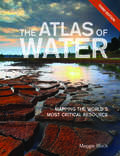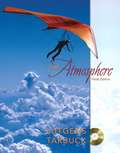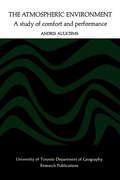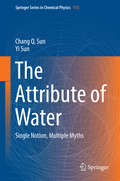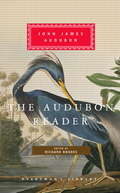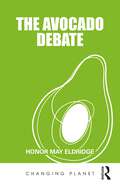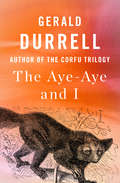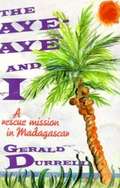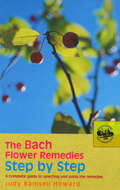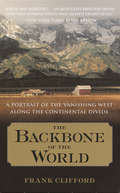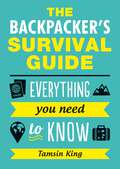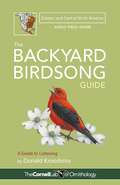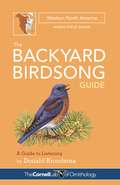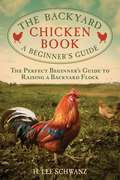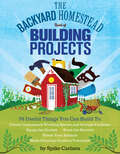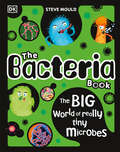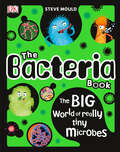- Table View
- List View
The Atlas of Environmental Migration
by François Gemenne Dina Ionesco Daria MokhnachevaAs climate change and extreme weather events increasingly threaten traditional landscapes and livelihoods of entire communities the need to study its impact on human migration and population displacement has never been greater. The Atlas of Environmental Migration is the first illustrated publication mapping this complex phenomenon. It clarifies terminology and concepts, draws a typology of migration related to environment and climate change, describes the multiple factors at play, explains the challenges, and highlights the opportunities related to this phenomenon. Through elaborate maps, diagrams, illustrations, case studies from all over the world based on the most updated international research findings, the Atlas guides the reader from the roots of environmental migration through to governance. In addition to the primary audience of students and scholars of environment studies, climate change, geography and migration it will also be of interest to researchers and students in politics, economics and international relations departments.
The Atlas of U.S. and Canadian Environmental History
by Char MillerThis visually dynamic historical atlas chronologically covers American environmental history through the use of four-color maps, photos, and diagrams, and in written entries from well known scholars.Organized into seven categories, each chapter covers: agriculture * wildlife and forestry * land use and management * technology and industry * polluti
The Atlas of Water: Mapping the World's Most Critical Resource
by Maggie BlackClimate change, population increase, and the demands made by the growing number of people adopting urban lifestyles and western diets threaten the world's supply of freshwater, edging us closer to a global water crisis, with dire implications for agriculture, the economy, the environment, and human health. Completely revised and updated, The Atlas of Water is a compelling visual guide to the state of this life-sustaining resource. Using vivid graphics, maps, and charts, it explores the complex human interaction with water around the world. This vibrant atlas addresses all the pressing issues concerning water, from water shortages and excessive demand, to dams, pollution, and privatization, all considered in terms of the growing threat of an increasingly unpredictable climate. It also outlines critical tools for managing water, providing safe access to water, and preserving the future of the world's water supply.
The Atmosphere: An Introduction to Meteorology (9th edition)
by Edward J. Tarbuck Frederick K. LutgensA standard textbook presenting a current and comprehensive survey of meteorology for undergraduates.
The Atmospheric Environment: A Study of Comfort and Performance
by Andris AuliciemsIn this study energy-exchange processes and climatic influences are examined in relation to thermal comfort and work efficiency as exemplified in a schoolroom situation. The investigation tests fundamental hypotheses on meterotropisms and optimal thermal environments and demonstrates how daily variations within atmospheric environments are considerably more important than had been previously suspected. It also describes the experimental use of a variety of microclimatic instruments and thermal indices in conjunction with psychological tests of continuous mental performance. The Atmospheric Environment treats a complex problem from a broad multi-disciplinary standpoint and is of particular interest to climatologists, psychologists, teachers and educational administrators, heating and ventilating engineers, and to all concerned with environmental management.(Department of Geography Research Publications 8).
The Attribute of Water
by Chang Q Sun Yi SunThis book features the latest advances and future trends in water science and technology. It also discusses the scientific popularization and quantitative resolution of a variety of mysterious properties of water and ice from the perspective of hydrogen-bond cooperativity in response to stimuli such as chemical contamination, electrification, magnetification, mechanical compression, molecular undercoordination, and thermal excitation. Anomalies include the floating of ice, the Hofmeister effect in solutions, regelation of ice, slipperiness of ice, water's tough skin, the Mpemba paradox, and the floating bridge. It also addresses the superfluidity of microchannels, hydrogen bond potentials, nanodroplet and bubble thermodynamics, quasisolidity and supersolidity, controlling superhydrophobicity-superhydrophilicity transition, and high-pressure ice formation. The target audience for this book includes students, senior scholars, engineers and practitioners in the area of physical chemistry, biology, as well as aqueous and colloid solutions.
The Audubon Reader
by Richard Rhodes John James AudubonThis unprecedented anthology of John James Audubon's lively and colorful writings about the American wilderness reintroduces the great artist and ornithologist as an exceptional American writer, a predecessor to Thoreau, Emerson, and Melville.Audubon's award-winning biographer, Richard Rhodes, has gathered excerpts from his journals, letters, and published works, and has organized them to appeal to general readers. Rhodes's unobtrusive commentary frames a wide range of selections, including Audubon's vivid "bird biographies," correspondence with his devoted wife, Lucy, journal accounts of dramatic river journeys and hunting trips with the Shawnee and Osage Indians, and a generous sampling of brief narrative episodes that have long been out of print--engaging stories of pioneer life such as "The Great Pine Swamp," "The Earthquake," and "Kentucky Barbecue on the Fourth of July." Full-color reproductions of sixteen of Audubon's stunning watercolor illustrations accompany the text.The Audubon Reader allows us to experience Audubon's distinctive voice directly and provides a window into his electrifying encounter with early America: with its wildlife and birds, its people, and its primordial wilderness.(Book Jacket Status: Jacketed)
The Avian Migrant: The Biology of Bird Migration
by John RappoleThe purpose of migration, regardless of the distance involved, is to exploit two or more environments suitable for survival or reproduction over time, usually on a seasonal basis. Yet individual organisms can practice the phenomenon differently, and birds deploy unique patterns of movement over particular segments of time. Incorporating the latest research on bird migration, this concise, critical assessment offers contemporary readers a firm grasp of what defines an avian migrant, how the organism came to be, what is known about its behavior, and how we can resolve its enduring mysteries. <P><P>John H. Rappole's sophisticated survey of field data clarifies key ecological, biological, physiological, navigational, and evolutionary concerns. He begins with the very first migrants, who traded a home environment of greater stability for one of greater seasonality, and uses the structure of the annual cycle to examine the difference between migratory birds and their resident counterparts. He ultimately connects these differences to evolutionary milestones that have shaped a migrant lifestyle through natural selection. Rather than catalogue and describe various aspects of bird migration, Rappole considers how the avian migrant fits within a larger ecological frame, enabling a richer understanding of the phenomenon and its critical role in sustaining a hospitable and productive environment. Rappole concludes with a focus on population biology and conservation across time periods, considering the link between bird migration and the spread of disease among birds and humans, and the effects of global warming on migrant breeding ranges, reaction norms, and macroecology.
The Avocado Debate (Changing Planet)
by Honor May EldridgeWhether smashed on toast or hailed as a superfood, the avocado has taken the world by storm, but what are the environmental and social impacts of this trendy fruit? This book does not seek to demonise the avocado and its many enthusiasts. Instead, it will illuminate consumers on the often unseen impacts of foods. A staple of cafes, restaurants, homes, and social media channels, demand for the avocado has grown exponentially over the past thirty years. From an everyday crop in South and Central America to a global phenomenon, this drastic change in demand has many consequences for people and the planet. As demand grows, so does the need for more land, with land clearances threatening habitats and biodiversity. As production grows, so does global distribution and the impacts that air and sea travel have on the environment. The shift from a local to a global product disturbs the local food system, raising serious questions around food sovereignty and food justice and the importance of establishing an agricultural system that is both environmentally and socially just. While focusing here on the avocado, this book allows readers to gain a better understanding of the food system as a whole. In doing so, it empowers us all to think carefully and critically about the environmental and ethical implications of our food choices more broadly. We shouldn’t feel guilty about eating avocados, we should simply understand the impact of doing so. This book is essential reading for all who are interested in learning more about the food system, sustainable diets, and the relationship between farming and the environment.
The Aye-Aye and I: A Rescue Journey To Save One Of The World's Most Intriguing Creatures From Extinction
by Gerald Durrell"First-rate entertainment": The author of the Corfu Trilogy recounts his expedition to Madagascar and search for the elusive, endangered aye-aye (Publishers Weekly). In 1990, Gerald Durrell; his wife, Lee; and a television crew embarked on a rescue mission to one of the most interesting places in the world: the island of Madagascar. It was there that they hoped to record and capture the endangered aye-aye, the world's largest nocturnal primate. Recognizable by its big eyes and long fingers, the strange, rare aye-aye was an animal of incredible fascination for Durrell, one he felt compelled to conserve as its habitat was taken away by deforestation. In this passionate memoir, Durrell's funny, vibrant voice shines as he describes the magical landscape of Madagascar, the exotic animals that inhabit it, and the challenges of his expedition to preserve an important part of our ever-changing world. This ebook features an illustrated biography of Gerald Durrell including rare photos from the author's estate.
The Aye-Aye and I: A Rescue Mission in Madagascar
by Gerald DurrellDurrell (The Ark's Anniversary) in his efforts to rescue endangered species. Here he is in Madagascar--with his wife, Lee, and a BBC crew--to film and to capture for breeding the rare aye-aye, a nocturnal lemur of Africa's east coast rain forests.
The Bach Flower Remedies Step by Step: A Complete Guide to Selecting and Using the Remedies
by Judy HowardThe Bach Flower Remedies Step by Step is a straightforward yet comprehensive guide to the Bach Flower Remedies system. Written by a consultant at the Dr Edward Bach Centre, the guide includes detailed descriptions of the 38 remedies, as well as helpful information on their preparation and administration. As correct selection is one of the most important ingredients of success in treatment
The Backbone of the World: A Portrait of the Vanishing West Along the Continental Divide
by Frank CliffordIn recent years, Los Angeles Times writer and editor Frank Clifford has journeyed along the Continental Divide, the hemispheric watershed that spans North America from the alkali badlands of southernmost New Mexico to the roof of the Rockies in Montana and into Canada. The result is The Backbone of the World, an arresting exploration of America's longest wilderness corridor, a harsh and unforgiving region inhabited by men and women whose way of life is as imperiled as the neighboring wildlife. With the brutal beauty and stark cadences of a Cormac McCarthy novel, The Backbone of the World tells the story of the last remnants of the Old West, America's mythic landscape, where past and present are barely discernible from one another and where people's lives are still intrinsically linked to their natural surroundings. Clifford vividly captures the challenges of life along the Divide today through portraits of memorable characters: a ranching family whose isolated New Mexico homestead has become a mecca for illegal immigrants and drug smugglers; a sheep herder struggling to make a living tending his flock in the mountains above Vail, Colorado: an old mule packer who has spent years scouring the mountains of northwest Wyoming for the downed plane of his son; a Yellowstone Park ranger on a lone crusade to protect elk and grizzly bears from illegal hunters; and a group of Blackfeet Indians in northern Montana who are fearful that a wilderness sanctuary will be lost to oil and gas development. In each of their stories, the tide of change is looming as environmental, economic, social, and political forces threaten this uniquely unfettered population. Clifford's participatory approach offers a haunting and immediate evocation of character and geography and an unsentimental eulogy to the people whose disappearance will sever a link with the defining American pioneer spirit. Set in a world of isolated ranches, trail camps, mountain bivouacs, and forgotten hamlets, The Backbone of the World highlights the frontier values that have both ennobled and degraded us, values that symbolize the last breath of our founding character. From the Hardcover edition.
The Backpacker's Field Manual, Revised and Updated
by Rick CurtisThe Backpacker's Field Manual has been the bible of the Princeton University Outdoor Action Program for more than a decade, field-tested by one of the most respected outdoor programs in the country. It is the most comprehensive backpacking guide available--broad in scope while still focused on the essential skills and information that backpackers need to travel safely and comfortably in the wilderness. Backpackers of all levels will find this book indispensable: before you start your trip, for deciding on an itinerary, selecting equipment, and figuring out what food, clothing, and other supplies to pack; once you're out in the wilderness, for choosing a campsite, setting up camp, navigating with map and compass, identifying trees and plants, and preparing meals (recipes included!); if something unexpected happens, for finding a lost person, seeking shelter in a lightning storm, and performing first aid for common injuries. More than 100 line drawings illustrate such useful skills as how to set up a tarp, repair your stove, wrap an injured ankle, predict the weather, and much more. And scattered throughout are Tricks of the Trail, additional tips for successful backcountry hiking. Any traveler knows that space in a backpack is limited, so on your next trip, pack the only guide you'll need--this one.
The Backpacker's Field Manual, Revised and Updated: A Comprehensive Guide to Mastering Backcountry Skills
by Rick CurtisWhen it was first published in 1998, The Backpacker's Field Manual set the standard for comprehensive backpacking books. Now exhaustively updated to offer a more complete view of backpacking today, it covers the latest developments in gear--such as Global Positioning Systems and ultralight hiking equipment--first aid, and Leave No Trace comping, and includes a chapter devoted to outdoor leadership resources and basics. Beginners and experienced hikers alike will find this book indispensable for trip planning strategies and also as a quick reference on the trail for:BACKCOUNTRY SKILLS--how to forecast the weather, identify trees, bear-proof your campsite, wrap an injured ankle, and more--illustrated with more than 100 line drawings.TRICKS OF THE TRAIL--time-tested practical lessons learned along the wayGOING ULTRALIGHT--downsizing suggestions for those who want to lighten upEvery traveler knows that space in a backpack is limited, so on your next trip, carry the only guide you'll ever need--this one--and take to the great outdoors with confidence.
The Backpacker's Survival Guide: Everything You Need to Know
by Tamsin KingA big trip brings big questions, like how do I go about choosing and packing a bag, how should I handle money abroad, and what the hell do I do when my hostel dorm is filled with snorers? Luckily this handy guide is filled with essential tips, advice and hacks to make your adventures on the road truly unforgettable.
The Backpacker's Survival Guide: Everything You Need to Know
by Tamsin KingA big trip brings big questions, like how do I go about choosing and packing a bag, how should I handle money abroad, and what the hell do I do when my hostel dorm is filled with snorers? Luckily this handy guide is filled with essential tips, advice and hacks to make your adventures on the road truly unforgettable.
The Backyard Bird Sanctuary: A Beginner's Guide to Creating a Wild Bird Habitat at Home
by Alan BaczkiewiczIdentify beautiful birds right in the comfort of your backyard with this illustrated, easy-to-use introductory guide to birding.Ever wonder how to attract beautiful birds right to your backyard? Now you can create a bird-watching paradise with this accessible guidebook that teaches you everything you need to know about welcoming your new feathered friends and how to care for them while they&’re visiting. Backyard Bird Sanctuary helps you attract fifty of the most common and sought-after birds in the United States. With beautiful, full-color illustrations of both the male and female of each species, you&’ll have no trouble identifying your new companions. Inside you&’ll find everything you need to know about welcoming these birds into your yard including: -Preferred types of food and feeder -Nesting and brooding habits -Range and migratory patterns -Effective techniques for attracting birds -Ways to provide shelter -And so much more! With tips and advice for any sized yard—even a small patio or balcony—you can enjoy the beauty of wild birds wherever you live. Now you can surround your home with cheerful bird songs and beautiful plumage all year long!
The Backyard Birdsong Guide Eastern and Central North America: A Guide to Listening
by Donald Kroodsma Larry Mcqueen Jon JanosikBack by popular demand with more than 300,000 copies sold, the Cornell Lab of Ornithology is proud to re-release the widely acclaimed and bestselling bird audio field guide series, Backyard Birdsongs, from award-winning Ornithologist and Author, Donald Kroodsma.Backyard Birdsongs is an interactive handbook of birds and their songs for beginning bird-watchers. With a touch-button electronic module housing common vocalizations of 75 species from across Eastern and Central North America, this volume offers a truly sensory way to identify and get to know local birds. Crisply detailed and scientifically accurate illustrations accompany each entry, and up-to-date range maps provide clear geographical reference points. Complete with an introduction to birdsongs that will inspire readers to look out their kitchen windows and venture out in the field, this unique book provides an exciting entryway into the subtle art of birding.This second edition includes a much-requested new Sound Track Index (to help make watching and listening to birds easier), and a free download of the Cornell Lab's own MERLINTM Bird ID App (on iTunes and Android stores).And as with all Cornell Lab Publishing Group books, 25% of the net proceeds from the sale of Backyard Birdsongs supports projects at the Cornell Lab, such as children's educational and community programs.
The Backyard Birdsong Guide Western North America: A Guide to Listening
by Donald Kroodsma Larry Mcqueen Jon JanosikBack by popular demand with more than 300,000 copies sold, the Cornell Lab of Ornithology is proud to re-release the widely acclaimed and bestselling bird audio field guide series, Backyard Birdsongs, from award-winning Ornithologist and Author, Donald Kroodsma.Backyard Birdsongs is an interactive handbook of birds and their songs for beginning bird-watchers. With a touch-button electronic module housing common vocalizations of 75 species from across Eastern and Central North America, this volume offers a truly sensory way to identify and get to know local birds. Crisply detailed and scientifically accurate illustrations accompany each entry, and up-to-date range maps provide clear geographical reference points. Complete with an introduction to birdsongs that will inspire readers to look out their kitchen windows and venture out in the field, this unique book provides an exciting entryway into the subtle art of birding.This second edition includes a much-requested new Sound Track Index (to help make watching and listening to birds easier), and a free download of the Cornell Lab's own MERLINTM Bird ID App (on iTunes and Android stores).And as with all Cornell Lab Publishing Group books, 25% of the net proceeds from the sale of Backyard Birdsongs supports projects at the Cornell Lab, such as children's educational and community programs.
The Backyard Chicken Book: A Beginner's Guide
by H. Lee SchwanzA small flock of poultry can supply all of the eggs your family needs during the year. And, after your hens have completed their egg-laying days, there will be meat for barbecuing or roasting. Luckily, a small flock takes a relatively small amount of space and is easy to manage.If yours is one of the growing number of families interested in raising chickens for eggs or meat, The Backyard Chicken Book contains all the essential information for the hatching, brooding, rearing, and managing family-sized poultry flocks. The first step in deciding on a family flock is to determine what breed may work best for your needs. For example, you can go with a laying breed such as the White Leghorn that produces top-quality eggs but provides little meat. Or, you could select a dual-purpose Rhode Island Red or New Hampshire that provides fewer eggs but much better meat. In addition to helping you select your type, this handy guide will also tell you what you need to know about: Providing housing for home poultry flocks Rearing the laying flock pullets Managing laying problems Fighting pests and disease Raising other poultry such as ducks, turkeys, geese, bantams, and guinea fowlEnhanced with full-color photos and dozens of illustrations, The Backyard Chicken Book is the perfect guide for the first-time poultry raiser.
The Backyard Homestead Book of Building Projects: 76 Useful Things You Can Build to Create Customized Working Spaces and Storage Facilities, Equip the Garden, Store the Harvest, House Your Animals, and Make Practical Outdoor Furniture (Backyard Homestead)
by Spike CarlsenGardeners, small farmers, and outdoor living enthusiasts will love this compilation of 76 rustic DIY projects. From plant supports and clotheslines to a chicken coop, a greenhouse, and a root cellar with storage bins, most of the projects are suitable for complete novices, and all use just basic tools and easy-to-find materials. You&’ll find techniques to build whatever your outdoor world is missing, with additional tips to live sustainably, happily, and independently. Also available in this series: The Backyard Homestead, The Backyard Homestead Seasonal Planner, The Backyard Homestead Guide to Raising Farm Animals, and The Backyard Homestead Book of Kitchen Know-How.
The Bacteria Book: Gross Germs, Vile Viruses and Funky Fungi (The Science Book Series)
by Steve MouldIn this fun, fact-packed science book for kids, young readers will discover the bacteria, viruses, and other germs and microbes that keep our bodies and our world running, as well as how and when they can be harmful and the precautions we can take to prevent them from becoming so.Meet a glowing squid, traveling fungus spores, and much more. The Bacteria Book walks the line between "ew, gross!" and "oh, cool!," exploring why we need bacteria and introducing readers to its microbial mates-viruses, fungi, algae, archaea, and protozoa.The Bacteria Book is a fun and informative introduction to a STEM subject that brings kids up-close to the big world of tiny science. With remarkable photography, kooky character illustrations, and lots of fun facts, this book uses real-life examples of microbiology in action to show how tiny microbes affect us in big ways.
The Bacteria Book: The Big World of Really Tiny Microbes (The Science Book Series)
by Steve MouldIn this fun, fact-packed science book for kids, young readers will discover the bacteria, viruses, and other germs and microbes that keep our bodies and our world running, as well as how and when they can be harmful and the precautions we can take to prevent them from becoming so. Meet a glowing squid, traveling fungus spores, and much more. The Bacteria Book walks the line between "ew, gross!" and "oh, cool!," exploring why we need bacteria and introducing readers to its microbial mates—viruses, fungi, algae, archaea, and protozoa. The Bacteria Book is a fun and informative introduction to a STEM subject that brings kids up-close to the big world of tiny science. With remarkable photography, kooky character illustrations, and lots of fun facts, this book uses real-life examples of microbiology in action to show how tiny microbes affect us in big ways.


